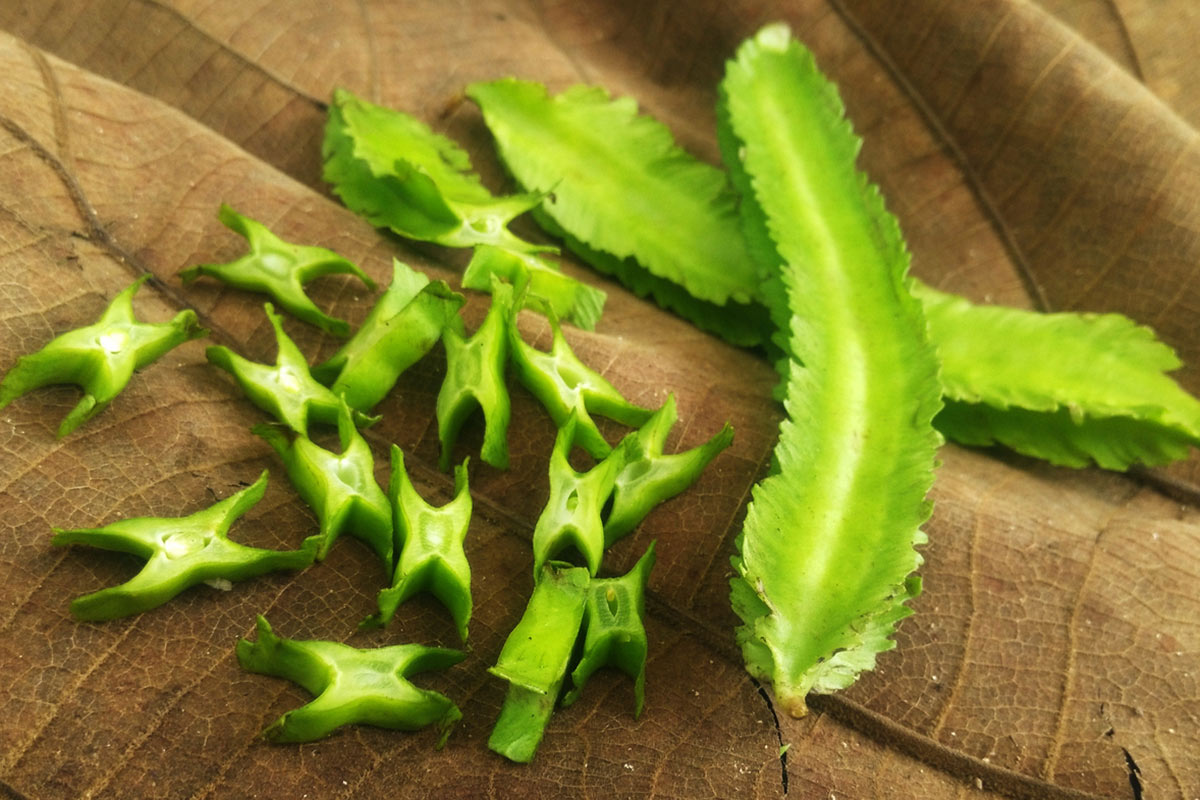
What makes the winged bean so special? This unique legume, also known as the Goa bean or four-angled bean, stands out for its versatility and nutritional benefits. Every part of the plant is edible—from the leaves and flowers to the pods and roots. Rich in protein, vitamins, and minerals, it offers a powerhouse of nutrients. Farmers love it because it grows well in tropical climates and improves soil fertility by fixing nitrogen. Culinary enthusiasts appreciate its crunchy texture and nutty flavor, making it a staple in many Asian dishes. Curious about this superfood? Let's dive into 15 fascinating facts about the winged bean!
Key Takeaways:
- Winged beans are a protein-packed superfood with edible pods, leaves, flowers, and roots. They are a sustainable crop that fixes nitrogen, requires less water, and promotes biodiversity, making them an eco-friendly choice for both farmers and consumers.
- If you're looking for a fast-growing, versatile, and nutritious addition to your garden or plate, winged beans are the way to go. From stir-fries to soups, these beans offer a unique taste and a nutritional boost while benefiting the environment.
What is a Winged Bean?
The winged bean is a tropical legume known for its unique appearance and nutritional value. This versatile plant is often grown in Southeast Asia and is gaining popularity worldwide. Let's dive into some fascinating facts about this remarkable bean.
-
Unique Shape: The winged bean gets its name from the four distinct wing-like ridges running along its pod. These ridges make it easy to identify.
-
Nutrient Powerhouse: Winged beans are packed with protein, vitamins, and minerals. They contain more protein than many other legumes, making them a great addition to vegetarian diets.
-
Edible Parts: Almost every part of the winged bean plant is edible. The pods, leaves, flowers, and even the tuberous roots can be consumed.
Nutritional Benefits of Winged Beans
Understanding the nutritional benefits of winged beans can help you make healthier food choices. Here are some key points to consider.
-
High Protein Content: Winged beans contain about 30% protein, which is higher than most other beans. This makes them an excellent protein source for vegetarians and vegans.
-
Rich in Vitamins: These beans are rich in vitamins A and C. Vitamin A is essential for vision and immune function, while vitamin C is important for skin health and immune support.
-
Mineral-Rich: Winged beans are a good source of essential minerals like calcium, iron, and potassium. These minerals are crucial for bone health, oxygen transport, and muscle function.
Growing Winged Beans
If you're interested in growing your own winged beans, here are some facts to get you started.
-
Tropical Climate: Winged beans thrive in tropical climates with plenty of sunlight and rainfall. They are commonly grown in countries like Thailand, Indonesia, and the Philippines.
-
Climbing Plant: This plant is a vigorous climber, often requiring support structures like trellises or poles to grow properly.
-
Fast Growth: Winged beans grow quickly, often reaching maturity in just a few months. This makes them an excellent choice for gardeners looking for a fast-growing crop.
Culinary Uses of Winged Beans
Winged beans are incredibly versatile in the kitchen. Here are some ways you can incorporate them into your meals.
-
Stir-Fries: The pods can be sliced and added to stir-fries for a crunchy texture and nutty flavor.
-
Salads: Young leaves and flowers can be used in salads, adding a unique taste and nutritional boost.
-
Soups and Stews: The tuberous roots can be boiled and added to soups and stews, similar to potatoes.
Environmental Impact of Winged Beans
Growing winged beans can also have positive environmental impacts. Here are some reasons why.
-
Nitrogen Fixation: Like other legumes, winged beans can fix nitrogen in the soil, improving soil fertility and reducing the need for chemical fertilizers.
-
Low Water Requirement: Winged beans require less water compared to other crops, making them a sustainable choice for water-scarce regions.
-
Biodiversity: Cultivating winged beans can promote agricultural biodiversity, which is crucial for ecosystem health and resilience.
The Winged Bean's Hidden Gems
Winged beans aren't just another vegetable. Packed with protein, vitamins, and minerals, they offer a nutritious punch. Their versatility in cooking makes them a favorite in many cuisines. From leaves to roots, every part of this plant is edible and beneficial. They thrive in tropical climates, making them a sustainable crop in many regions. Plus, their nitrogen-fixing ability enriches the soil, promoting better yields for other plants.
Incorporating winged beans into your diet can boost health and add variety to meals. Whether you're a gardener, a chef, or someone who loves trying new foods, winged beans have something to offer. So next time you're at the market, grab some winged beans and enjoy their unique taste and benefits. This humble plant truly deserves a spot in your kitchen and garden.
Frequently Asked Questions
Was this page helpful?
Our commitment to delivering trustworthy and engaging content is at the heart of what we do. Each fact on our site is contributed by real users like you, bringing a wealth of diverse insights and information. To ensure the highest standards of accuracy and reliability, our dedicated editors meticulously review each submission. This process guarantees that the facts we share are not only fascinating but also credible. Trust in our commitment to quality and authenticity as you explore and learn with us.


